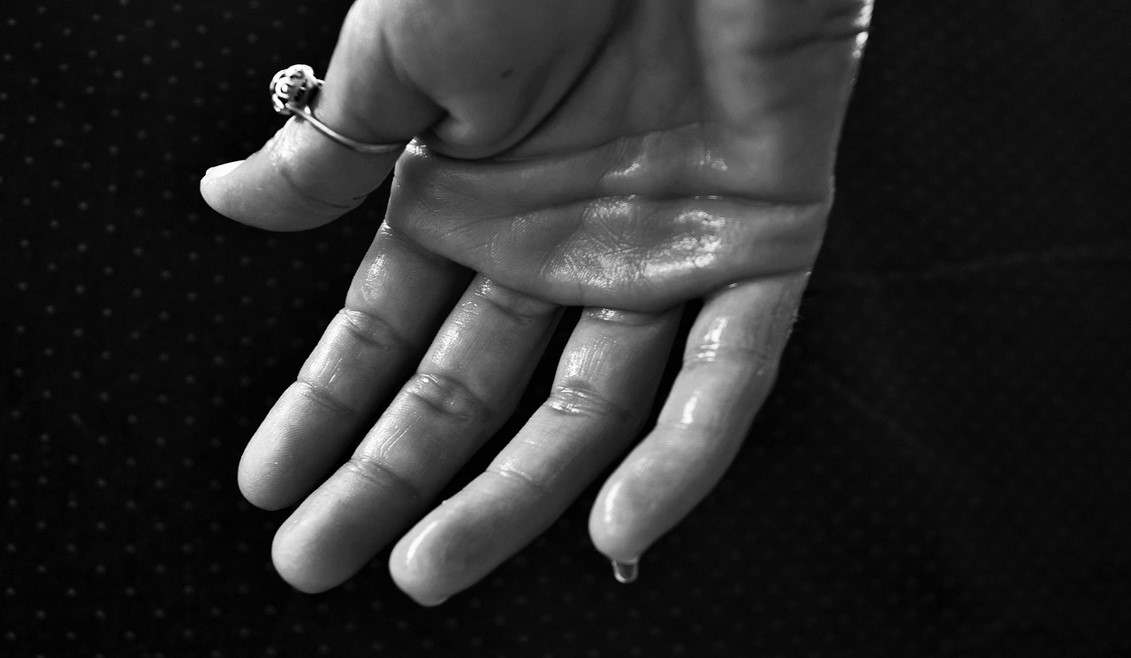
Hyperhidrosis, or excessive sweating, affects approximately 3% of the population. Characterized by copious sweat production, this condition causes excessive moisture even when the body doesn’t need it for temperature regulation. It can occur in specific areas such as the underarms, palms, feet, or face (primary or focal hyperhidrosis) or across the entire body (secondary hyperhidrosis). Some people’s sweat glands go into overdrive due to their family tree, while others experience it as a symptom of an underlying condition – like diabetes, thyroid issues, or the hormonal shift that comes with menopause. For those seeking to stop hyperhidrosis, there are various advanced treatment options available.
Understanding Hyperhidrosis
It’s tough to enjoy life’s little moments when you’re stuck worrying about wet patches and clammy hands – hyperhidrosis can be a real self-esteem killer. People plagued by hyperhidrosis have a backup plan: antiperspirants. With either over-the-counter or prescription options, these products depend on aluminum chloride to rein in sweat glands and offer a sense of control. What works for most people might not be enough for everyone, and that’s when it’s time to look for alternative solutions.
Traditional Treatments for Hyperhidrosis
Antiperspirants
The first line of defense against hyperhidrosis has traditionally been the use of antiperspirants. To curb sweat glands’ overactivity, look for products – either over-the-counter or by prescription – that feature aluminum chloride as a key ingredient. While these solutions hit the mark for many, a few exceptional cases call for more heavy-duty help.
Iontophoresis
Iontophoresis involves using a medical device to pass a mild electrical current through water to the affected areas, typically the hands and feet. This innovative approach puts sweat glands on pause, but don’t think you’re off the hook – maintenance is a must. It is a non-invasive and relatively low-cost option. With cutting-edge tech in healthcare, treatment results have soared, and more people than ever can now get the help they need.
Technological Advancements in Hyperhidrosis Management
MiraDry
Thanks to MiraDry, those dreaded sweat stains are a thing of the past. This innovative device uses electromagnetic energy to safely eliminate sweat glands in the underarms. At the heart of this procedure lies a clever trick: a thermally induced demise for the sweat and odor glands, achieved through a carefully controlled heating and cooling sequence. Sweat-free living is within reach! MiraDry’s non-surgical procedure tackles underarm hyperhidrosis head-on, freeing you from embarrassing sweat stains and sticky situations, all while keeping your daily routine intact.
Qbrexza
Qbrexza is a topical medication in the form of a wipe. The active ingredient glycopyrronium gets to work by shutting down the chemical messenger that tells sweat glands to kick into high gear. Hyperhidrosis no longer has to hold you back. With this prescription treatment, you can wave goodbye to embarrassing sweat incidents and hello to a more carefree, confident you – all without invasive procedures or annoying hassle.
Botulinum Toxin Injections
Botulinum toxin injections, commonly known as Botox, have been successfully used to treat hyperhidrosis. By injecting small amounts of Botox into the affected areas, the nerve signals responsible for sweat production are blocked, significantly reducing sweating. This treatment provides a significant break from your symptoms – think months of feeling better – and can be repeated as often as you need it.
Advances in Wearable Technology
Recent innovations in wearable technology have introduced smart fabrics and devices that monitor and manage sweating in real time. With the help of wearables, you can take control of excessive sweating by receiving instant feedback and targeted cooling or therapeutic relief that quiets overheated skin. Treating hyperhidrosis is no longer a cookie-cutter process; thanks to recent innovations, people can expect a plan that’s as unique as they are – and that makes all the difference.
Minimally Invasive Surgical Options
Liposuction
For severe cases of underarm hyperhidrosis, liposuction may be considered. This procedure involves the removal of sweat glands through a small incision using a cannula. The glands are suctioned out, reducing sweat production in the treated area. Liposuction for hyperhidrosis is minimally invasive and offers long-term relief.
Sympathectomy
Endoscopic thoracic sympathectomy (ETS) is a surgical procedure that involves cutting or clipping the sympathetic nerves responsible for excessive sweating. While highly effective, ETS is typically reserved for severe cases that have not responded to other treatments. The procedure carries potential risks and side effects, making it crucial to discuss thoroughly with a healthcare provider.
The Future of Hyperhidrosis Treatment
As technology continues to advance, new treatments for hyperhidrosis are being developed, offering hope for those affected by this condition. Emerging therapies include targeted laser treatments and advanced microwave technology, both showing promise in clinical trials. These innovations aim to provide more effective, less invasive options for managing excessive sweating.
Conclusion
Hyperhidrosis can be a challenging condition, but technological advancements have significantly improved management options. From non-invasive treatments like MiraDry and Qbrexza to minimally invasive procedures like liposuction and sympathectomy, there are numerous ways to effectively reduce excessive sweating. Consulting with a dermatologist or a specialist is essential to determine the most suitable treatment plan. Embracing these technological solutions can help individuals regain confidence and improve their quality of life.








